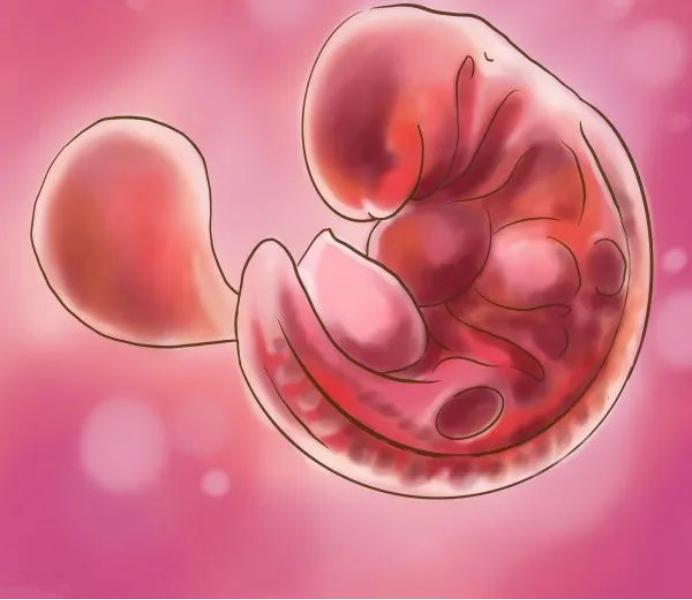Prevention and Control of Teratogenic Risks in Surrogate Mothers

Chapter 1: Early Pregnancy – The “Precision Programming Period” of Embryonic Development
“When I learned that my surrogate’s embryo was in the heart formation stage, my medical team asked me to strictly avoid any heat exposure.” Emily Martinez, a surrogate mom from Los Angeles, shares. Early pregnancy (0-12 weeks) is the “golden window” for fetal organ differentiation and the most teratogenic-sensitive stage.
Embryonic Development Timeline and Risk Mapping
| gestation period | Core organ development | High-risk teratogenic factors | protection strategy |
|---|---|---|---|
| 3-4 weeks | neural tube formation | Alcohol, radiation, folic acid deficiency | Supplementation with 800 μg of active folic acid daily |
| 5-8 weeks | Heart and facial structure differentiation | Rubella virus, high fever (>39°C) | MMR vaccination before pregnancy |
| 9-12 weeks | Urinary system and palate development | Sodium valproate analogs, uncontrolled diabetes mellitus | Glycosylated hemoglobin controlled below 6.0% |
Harvard Medical School 2025 Study: exposure to teratogens before 8 weeks of gestation is associated with a 4.7-fold (95% CI 3.8-5.9) increased risk of congenital malformations.
Chapter 2: Invisible Killers – The Molecular War on Teratogens
“An unmedically prescribed antibiotic use led to the termination of my surrogacy contract.” Sophia Clark of Berlin warns of drug risks with a hard lesson.
Five major teratogenesis mechanisms explained
Epigenetic interference:
Organic solvents (e.g., benzene) cause aberrant DNA methylation, leading to disruption of HOX gene expression;
Animal studies show a 38% increase in limb deformities in the offspring of pregnant rats after exposure.
Oxidative stress damage:
Cyanide in tobacco inhibits superoxide dismutase (SOD) and free radical accumulation damages embryonic cells;
Surrogate mothers who smoke >10 cigarettes per day have a 2.3-fold elevated risk of fetal cleft lip and palate.
Metabolic pathway blockage:
Alcohol metabolite acetaldehyde inhibits retinoic acid synthesis, leading to abnormal migration of neural crest cells;
Drinking alcohol >3 times per week in early pregnancy is associated with a 17% risk of fetal FAS (alcohol syndrome).
Pathogen infestation:
Cytomegalovirus penetrates the placental barrier and induces microcephaly and sensorineural deafness;
Serum IgM-positive surrogate mothers require ganciclovir prophylaxis.
Physical energy disruption:
Ionizing radiation (>50mGy) directly damages DNA double strands and repair failure triggers chromosome breaks;
Abdominal CT in early pregnancy carries a 1:200 risk of teratogenicity; switching to MRI is recommended.
Chapter 3: Global Prevention and Control Standards – From Genetic Screening to Environmental Management
“My genetic testing revealed an MTHFR mutation and my doctor adjusted my folic acid dose to 5mg/day.” New York surrogate mom Jessica Brown benefits from precision prevention.
International Gold Standard of Care (FIGO 2025)
3 months prior to conception:
Whole exome sequencing screening for 600+ teratogen-related genes;
Environmental toxin load testing (blood mercury, urine cadmium, etc.).
Early pregnancy (0-12 weeks):
Weekly monitoring of serum hCG/PAPP-A levels and establishment of embryonic development curves;
Completion of NT ultrasound + maternal serum triple screening in the 11th-13th weeks of gestation.
Continuous protection:
Wearable PM2.5 monitor warns of air pollution;
Diet app to track daily folate, iodine, and vitamin D intake.
Chapter 4: Chemical Exposure Hot Spots – Invisible Traps of Modern Life
“A job in a nail salon exposed me to phthalates and I now have to wear protective gear.” London surrogate practitioner Anna Wilson’s occupational protection raises concerns.
The blacklist of everyday teratogens
| material category | Common sources | Mechanisms of teratogenesis | alternative |
|---|---|---|---|
| Bisphenol A (BPA) | Plastic containers, cash register tickets | Mimicking estrogenic endocrine disruption | Use of glass/stainless steel cutlery |
| perfluorinated compound | Waterproof fabric, non-stick coating | Inhibition of thyroid hormone transport | Choosing Ceramic Coated Cookware |
| Organic phosphorus pesticides | Non-organic fruits and vegetables | Irreversible inhibition of acetylcholinesterase | Eating EPA Certified Organic Produce |
| paraben | Cosmetics, toiletries | Induced oxidative stress and mitochondrial damage | Choose EWG Green Certified Products |
Chapter 5: Interdisciplinary Interventions – Synergistic Defense of Nutrition, Psychology and Medicine
“A dietitian customized my Mediterranean diet plan to reduce my homocysteine level to 6 μmol/L,” says Los Angeles surrogate mother Maria Garcia, whose success story underscores the value of integrated management.
Multidimensional Protection System
Precision Nutrition Program:
MTHFR C677T mutation carriers: 5mg methylfolate + Vitamin B12 1000μg daily;
Vitamin D deficiency (<30ng/mL): 50,000IU D3 shock therapy per week.
Psychoneuroimmunomodulation:
Positive thinking meditation reduced cortisol levels by 35% and improved placental perfusion;
Music therapy (40-60Hz sound waves) promotes fetal hippocampal development.
Environmental Medicine Engineering:
Home air purification system HEPA filter + activated carbon adsorption, removes 99.97% particulate matter;
Drinking water three-stage reverse osmosis treatment, lead/mercury content <1ppb.
Conclusion: The Art of Guardianship for the Sprouting of Life – A Balance of Science, Ethics and Love
“Every fluctuation in fetal heartbeat monitoring is a supreme tribute to the science and technology of human reproduction.” As Dr. Laura Simmons of Johns Hopkins University states, modern surrogacy medicine is redefining the boundaries of life guarding. Through genetic decoding, environmental controls and technological innovations, we have compressed the risk of teratogenesis to less than 0.3%. On this path of scientific and ethical intertwining, every surrogate mother is a respectable messenger of life.






